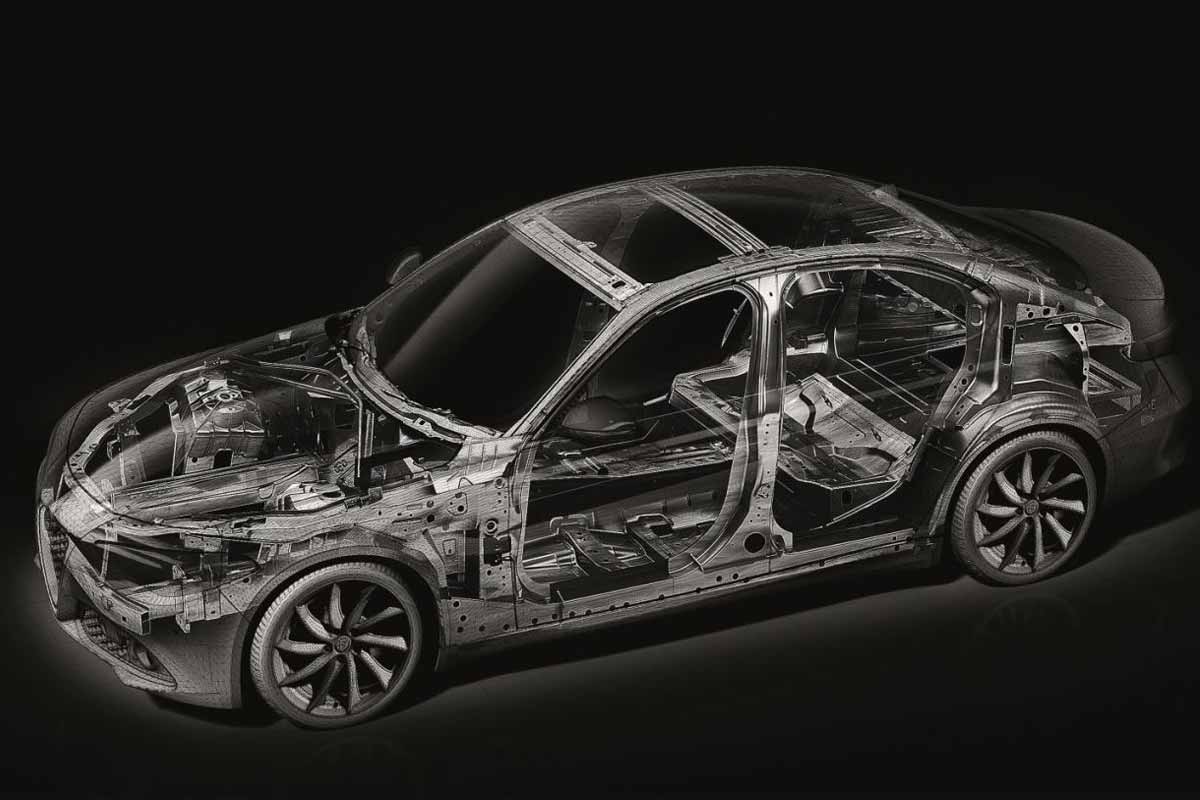
When Sergio Marchionne unveiled the Alfa Romeo Giulia in June 2015, it wasn't just the launch of a new sports sedan. It was also the birth of an entirely new platform, the Giorgio, the fruit of billions of euros of investment. Conceived as the technical basis for Alfa Romeo's rebirth, Giorgio was to carry a whole range of premium models with rear-wheel drive and all-wheel drive, capable of competing with BMW, Audi and Mercedes.
Huge ambitions for Alfa Romeo
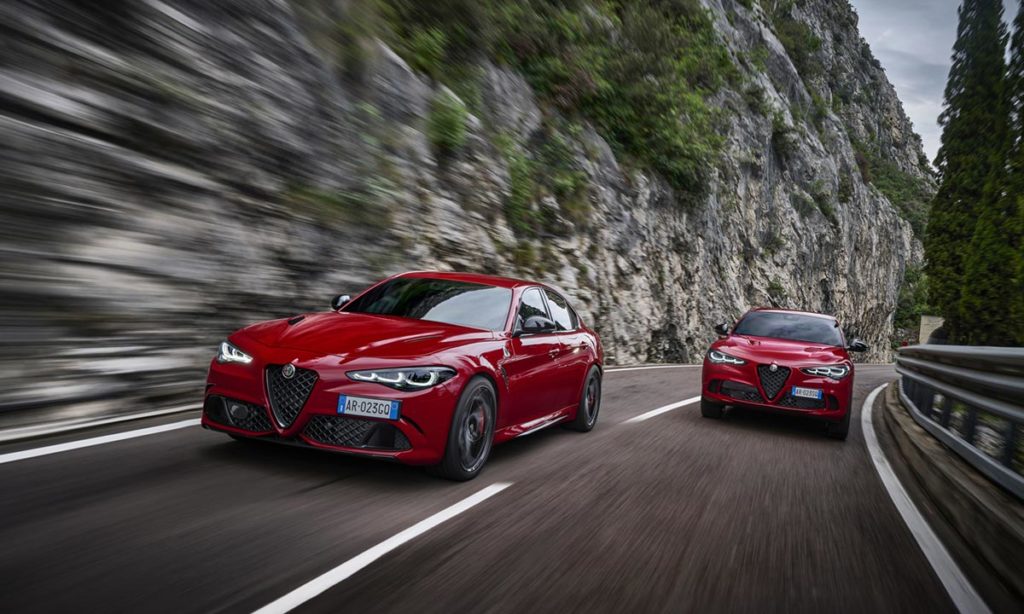
The Giulia was the first model to benefit from the new system in 2016, followed by the Stelvio in 2017. Both models win over the press and enthusiasts with their dynamism, but sales fall far short of targets (barely 120,000 Alfa Romeo per year at best, against the 400,000 hoped for). The relaunch effect will not materialize.
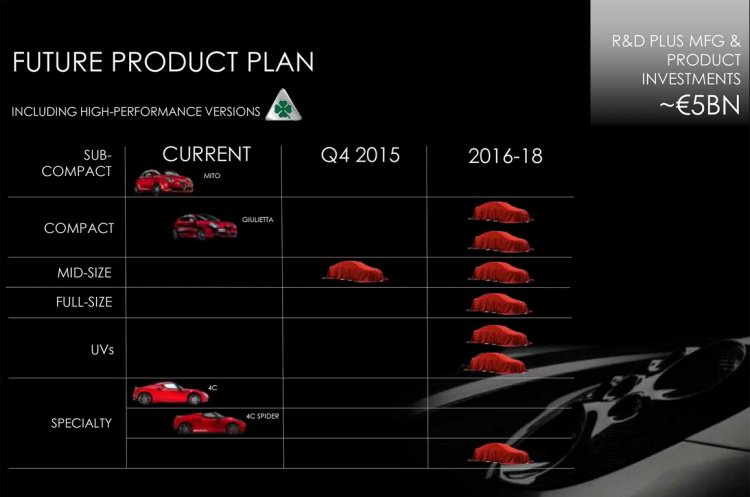
Maserati invites itself onto Giorgio
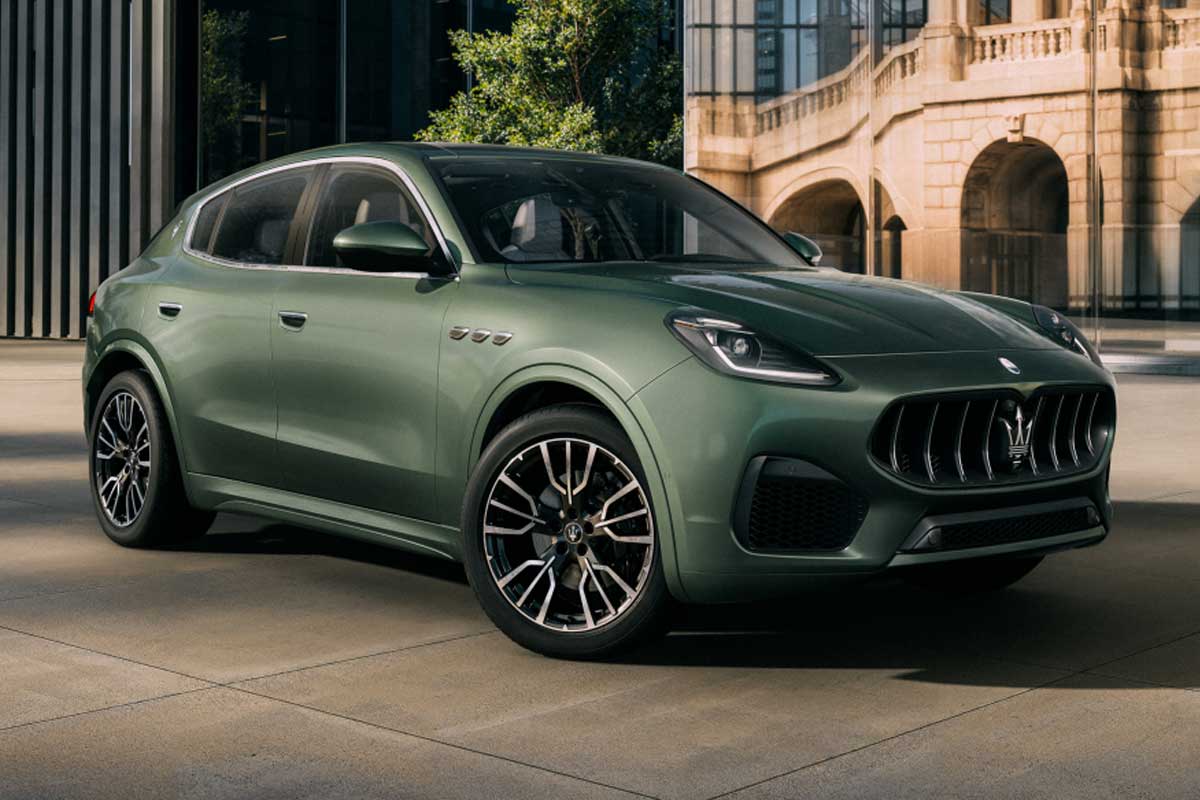
To make the investment worthwhile, Giorgio is then adapted to the new Maseratis. First came the Grecale SUV, launched in 2022, then came the new GranTurismo and GranCabrio, launched on an evolved Giorgio 1.5 platform, proof that Stellantis hadn't totally abandoned the idea of adding value to it.
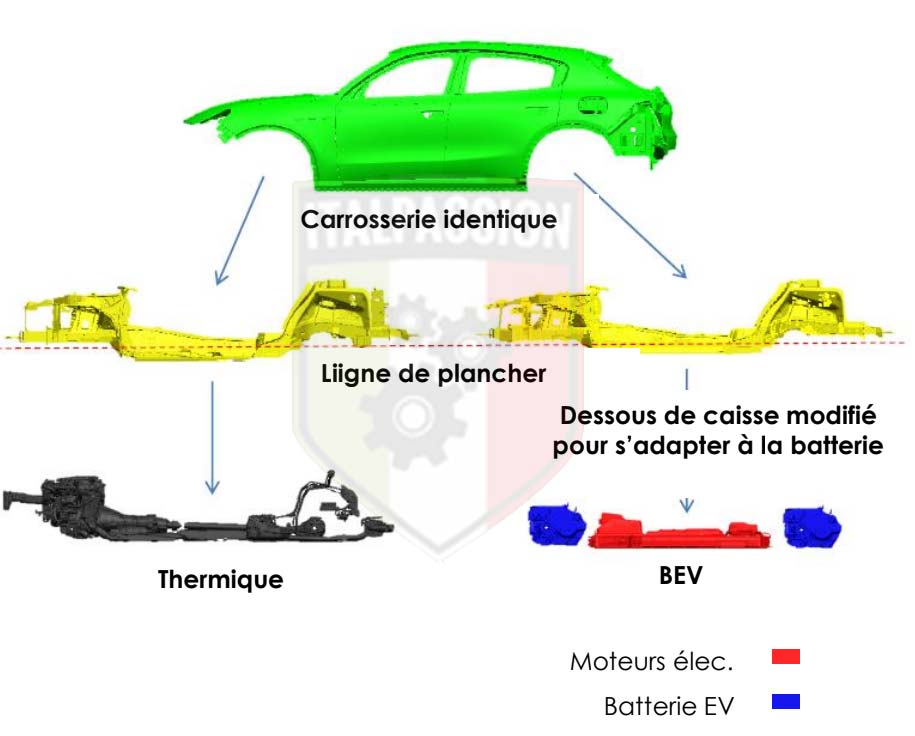
An Achilles heel: electrification
The problem is that Giorgio was originally designed for combustion engines and light hybrids. PHEV models had indeed been considered in 2018, but plans were abandoned in 2019. True, the Grecale MHEV exists, and Giorgio 1.5 eventually gave birth to 100 % electric versions of the Grecale, GranTurismo and GranCabrio. But electrification came too late, and not in line with market expectations.
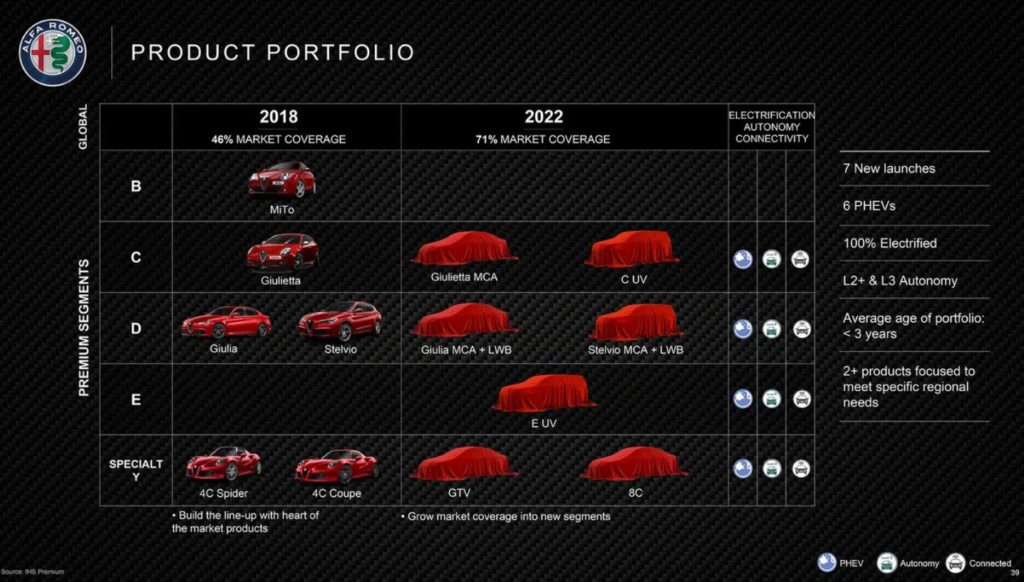
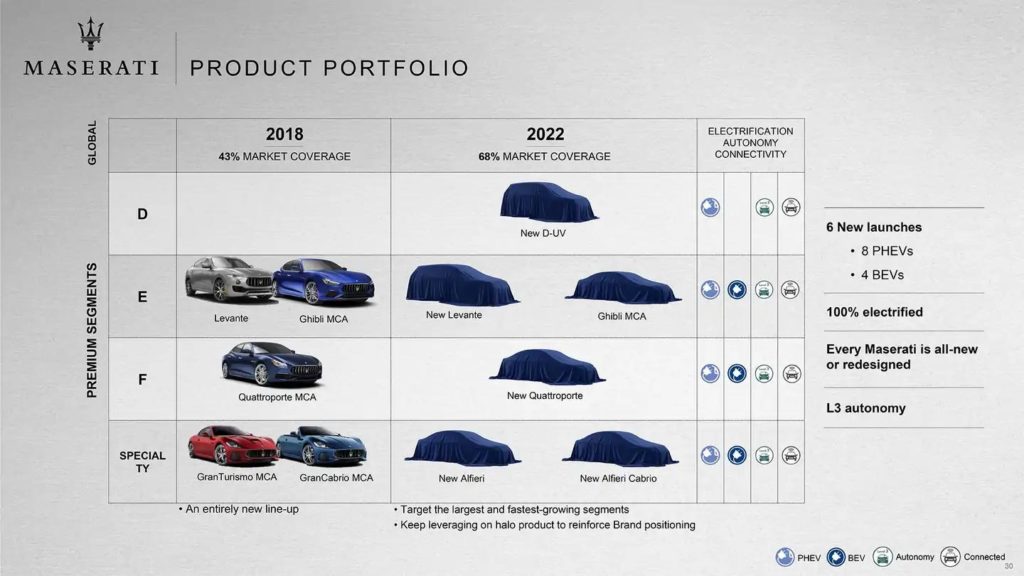
Billions invested... for nothing
Today, Stellantis draws the line. In its half-yearly report for 2025, the Group states that it has written down over 550 million euros for Maserati and around 26 million for Alfa Romeo, directly linked to the platforms used by these brands. All in all, several hundred million euros in book losses have been recorded in recent months, after admitting that forecast volumes will never be sufficient to amortize the initial investment.
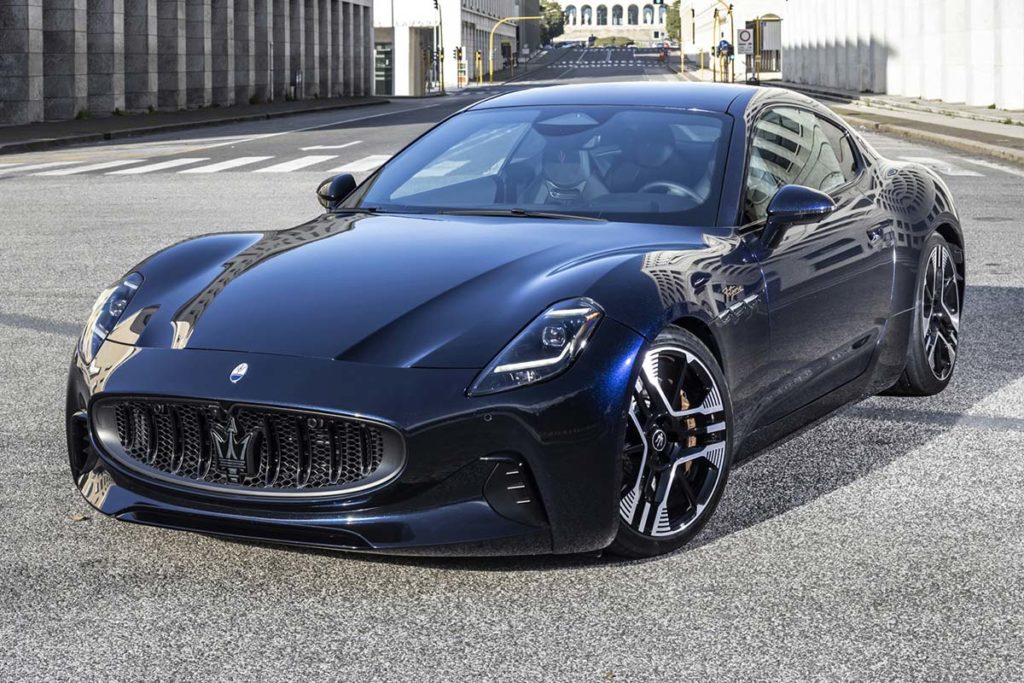
Clearly, the billions injected into Giorgio to develop five models - Giulia, Stelvio, Grecale, GranTurismo and GranCabrio - will never pay off.
Stellantis's decision to bury Giorgio is not just an accounting decision. It is also symbolic: one of the most ambitious projects of the FCA era is now considered an industrial failure. Future Alfa Romeo and Maserati models will be based on the STLA Large and STLA Medium platforms, designed from the outset for electrification and aimed at reducing costs through greater pooling within the Group.
Merging with PSA and abandoning the Giorgio made it a failure. Electrification is possible on this basis, as demonstrated by Maserati.
Ma se i francesi non riescono a fare un motore diesel o benzina che funzioni come riusciranno a fare una piattaforma come la Giorgio!!!!!!! Stellantis ha distrutto il gruppo FCA e come al solito paghiamo noi italiani....
all those who express themselves here and who don't drive either Alfa-Romeo or Fiat, should know that when you want to do premium, you have to have premium service when you go to a Fiat dealership, to buy an Alfa-Romeo it starts with the salesman who is below par and the after-sales service which is no better!
You may not like it, but you don't get a panda customer in the same way you get a giulia customer, so take a look at the real premium brands.
That's true.
Vero,ma questo è un altro problema che,a mio avviso prescinde dal discorso piattaforma Giorgio..ma piu' alla generale tendenza a un pressapochismo che poi si evidenzia anche in cio' che lei fa notare,la bonta' la qualità del personale,accoglienza e preparazione, elementi che per prima cosa debbono esserci e se si trova chi li possiede debbono essere ben pagati.
What's a premium brand: does it have to be German?
È un po' una caricatura. Stellantis prende molte decisioni sbagliate. Ma i marchi italiani andavano male già da diversi anni, con bassi volumi di vendita. Non è questo il caso di Peugeot.
The "total" electrification of cars is a trap, I'd even say a scam designed to revive the automobile industry. (That's why it hasn't taken off, and won't). Electricity in cars can only be profitable for the user, and ultimately for society, in the context of recovering "kinetic energy" through hybridization. The all-electric motor and battery, with its overall efficiency (close to 25 to 30 %), is ultimately far inferior to that of petrol and especially diesel internal combustion engines (43 to 47 %, but that's not too much to say).
Continuation: If well designed, a hybrid vehicle restores part of the energy consumed in starting (the moving vehicle only expends mechanical and aerodynamic resistance, and is therefore not recoverable), and sends back to the batteries the energy useful for slowing down the vehicle (minus the loss of motor, battery and converter efficiency...). What's more, the "trend" is for monstrous vehicles with catastrophic aerodynamics (I'm sorry to see that on the freeway): Ok for small urban cars (Renault, Japanese, Korean ...) I have an Alfa 159 2.4 Ti Q4, and I wouldn't change it for any electrified car.
Yet another glorious idea from the FCA era, where existing customers were forgotten. No more Punto, giulietta Lancia, but instead expensive stuff for customers who didn't exist! And who weren't coming to please the Panda salesmen... Brilliant!
Gone is the cuore sportivo, it's the era of the SUV, cars that all look the same, with no flavor and no interest. I've got a Giulietta but I don't know what to buy next, but I don't think it'll be an Alfa, given the poverty of the range, and I regret that.
My Giulietta is my 3rd Alfa and it will be my last, Alfa have abandoned their sporting heritage and replaced them with SUV monstrosities because of this trend to own oversize characterless SUV vehicles... R.I.P peace Alfa Romeo as your cars are no longer suitable for petrol heads like me but your history will live on.
I switched from my Giulietta QV to Mazda Skyactiv X and don't regret it.
Don't be so stupid!!! Stla large is improved Giorgio platform!!!!
That's not true. I'll say it again.
STLA Large was initially nicknamed Giorgio 2, but it's a completely new platform that incorporates some components from Giorgio (internal source). But it is indeed new.
It's Giorgio 1.5, used in Maserati, that is an evolution.
Identical to STLA MEDIUM. This is not an evolution of EMP2 (or eVMP) as many think. It is a completely new platform. Just a few components that are taken over, such as the anchors on the body, in order to modify the industrial production tool as little as possible.
Io ogni giorno passo davanti agli uffici di arese e per lo piu cio lavorato per ben 24 anni con lancia alfa fiat mi viene il magone ogni volta! io sono del 76 ho vissuto la gloria dei motori italiani verso la fine ok ma pensare che eravamo noi i produttori d auto e anche super car e non solo ci siamo fatti fottere alla grande il nostro paese che vergogna e che tristezza addio a tutti. La piattaforma Giorgio e un altra triste realta che non esisterà piu come tutto il resto.
Once again, it's thanks to the Psa platforms that fiat is able to survive! How could we give our national jewels to Fiat so easily?
Was heißt "worauf sich FIAT verlassen kann"?
Der größte Fehler von Fiat war der Zusammenschluss mit PSA. Die franzosen können nicht mal ordentliche Motoren bauen .... Stichwort 3 Zyl. Motorschäden durch Steuerketten.
Es gab bei Fiat nie so miese Motoren!
Stellantis ist der Grund warum nach meiner Giulietta ein Japaner in doe Garage kommt .
Der Meinung bin ich auch, siehe Fiat Ducato. Die neuen Modelle haben viele Probleme. Ich selber habe einen von 2019, würde jetzt keinen mehr kaufen, seit z.B auch die FCA Motoren nicht mehr verbaut werden.
The engine of Ducato is a Fiat 2.2L engine.
Wie gehen wir verantwortungsvoll mit unseren Motoren um? Dasselbe gilt für Ihre neuesten Mercedes und BMWs, die immer weniger zuverlässig sind und bei Elektroautos leicht kaputt gehen. Wir reden nicht einmal darüber. Sie haben Probleme, wir haben auch unsere Probleme.
Der mit der Steuerkette hat auch BMW. Mein 320 Diesel, JG 2016, mit 140'000km, kapitaler Motorschaden und immer im Service bei BMW. Null Kulanz, nie mehr ein BMW. Das beste Auto steht heute dort in der Verkaufshalle, wo der beste Service ist. Egal ob Fiat oder Citroen.
Ist schon bei mir geschehen, Mazda CX30 gegen Giulietta QV
Parli forse dei motori "pure tech"...?
If Peugeot hadn't imposed the puretech at all costs, made a mmix with the fire fly or admitted its stupidity with the rubber timing belt soaked in oil, it wouldn't be where it is today, all because of the stubbornness of iznogoud tavares.
Don't forget that FIAT is the biggest seller in terms of vehicle quality, that Jeep is the most profitable, and that psa is looking for .
So many mistakes made through misplaced pride, Filosa will right the ship, he can hardly do worse in the long run.
Ssshhhh!!!!
No hablemos de las correítas en baño de aceite mejor!!!!
Y de los Peugeot y Citroen con motores Fiat tampoco digamos nada!!!!
No existennnnn!!!!
In South America.
National jewelry ?????
PSA has know-how in small platforms: CMP and Emp2, but when it comes to powertrains, they're rubbish, not even capable of making a reliable engine. South America's good fortune is to benefit from Firefly on all Stellantis brands.
Fiat lived very well without PSA. It's even thanks to Fiat that the coffers are filling up. The problem is a French management team that wants to make millions by economizing on shitty French manufacturing quality....never stellantis in my house. I prefer Asian.
Well, no, FCA was in complete crisis. And the management of Stellantis is Italian (main shareholder). In short, Stellantis is going under thanks to the Italians. It's a shame for jobs in France, because in Italy they've already liquidated almost everything.
E non ti domandi perché in Italia hanno già liquidato tutto? Perché purtroppo anche se è stata FCA ad aver la maggioranza è stato scelto il CEO di PSA Tavares che ha continuato la sua gestione che con il tempo si è dimostrata quella che è veramente: una merda. Non addossate a FCA responsabilità di provenienza PSA. A dimostrazione di efficienza della genialità italiana controllate chi sta gestendo la rinascita di Renault.
@Hans
Was Tavares Italian? Imparato too?
It was French-style management - authoritarianism mixed with arrogance - that sank Stellantis. Under FCA, North America was the Group's golden goose. Since the merger, it's been a berezina. Tavares was the Jean-Marie Messier of the automotive industry, and Filosa will have to repair the damage.
But yes, when you don't understand anything, that's what you remember. Tavares can't be that bad, considering the money he's received. How much do you get?
@Hans
Typical response from someone lacking arguments.
Reading your comments, I can see that you don't understand any more than I do, quite the contrary.
"Tavares can't be that bad, considering the money he's received. How much do you get?"
What does that have to do with anything? Having a golden parachute - negotiated before the contract - doesn't make you a good person. Otherwise, to answer your question, my skills are recognized by my employer and I wasn't fired like a piece of trash, unlike him.
It's not a PSA platform, but one of the 4 new STLA platforms from the Stelantis group, some of which (the biggest) won't be fitted on any French models (normally).
you buy a diamond and then throw it in the garbage can, that's what it's all about; deplorable.
Il progetto Giorgio del 2014-15, gli Skunk Works (da morir dal ridere...) e l'arrogante presuntuoso Marchionne: un FALLIMENTO TOTALE
Vergogna le vendite modelli Alfa complessivamente non sono mai andate oltre le 50000 annui, un disastro...
The Giorgio platform is exceptional and delivers a rare driving pleasure. Anyone who has driven the Giulia and Stelvio is convinced of this, to the point where the competition is buried.
The mistake is not to have made the Alfa Romeo Giulia and Stelvio hybrids to avoid the malus.
Giving up on Giorgio is despairing, as we have our doubts about the PSA-origin platforms, which will surely not deliver the same driving pleasure.
The Tavares disaster is over, but what's next doesn't look much better with this regrettable decision.
I think the Giulia will unfortunately be the last true Alfa...
But this has been said many times before....
O Giulia parecia um daewoo....sem ser o GTA era um mono, e o stelvio? Para o preço de um Macan não oferecia metade e era feio e vulgar! Ainda bem que tive um bertone e um sprint
Daß eine Grundkonstruktion nicht von Anfang an ausschließlich für rein elektrische Fahrzeuge ausgelegt sein muß, haben verschiedene Hersteller schon gezeigt. Aber die Effektivität des rein elektrischen Fahrzeugs zieht auf jeden Fall Nutzen davon, wenn der Fahrzeug-Unterbau ("Plattform") besonders praktisch für Elektro-Antrieb ausgelegt ist. Das ermöglicht am ehesten Freiräume bei der Gestaltung der oberen Fahrzeug-Aufbauten.
Davvero un peccato! Avrebbe senso rimodernare i modelli Giulia e Stelvio per continuare a venderli nei mercati di tutto il mondo, non solo in Europa. I Dazi e le sanzioni che oggi limitano le vendite di AR nel mondo verranno rimossi nel giro di qualche mese.
Che peccato, avremo la Giulia408C4 e La Stelvio5008C5, che brutta fine!
D'accordissimo,per questo in futuro guarderò verso Toyota o BMW
ninuzzu Meglio toyota ho Honda
Parole sante
Hai proprio ragione. E' frutto dell'incapacità storica e cronica soprattutto da parte dei Francesi di fare è gestire auto di fascia Premium.
La "Giorgio" è stata volutamente fatta fallire!!!
Non si lancia unico modello in una gabbia di leoni... già successo con altri brand...la mancata produzione della Giulia station wagon, della coupé e della Cabrio ne ha decretato il fallimento... Volevano vendere 400 mila unità con unico motore diesel ed uno a benzina (non Alfa)??? ...senza altra scelta!! alla fine le vendite non sono state poche!!!!
Alfa Romeo dovrebbe evitare l'onda del momento: i suv, rimanere nell'ibrido, cioè motore endotermico con supporto dell'elettrico, non gettare alle ortiche Giorgio, fare ricerca nei combustibili x ridurre/azzerare le emissioni, Alfa vuole dire motori Alfa, così come telaio, così come piacere unico di guida Alfa, oggigiorno le Alfa hanno perso molto di carattere distintivo, da cui è caduto vertiginosamente l'interesse per tale marchio, c'è lo svuotamento di sentimento pro Alfa X gli alfisti storici(ho una 156 del '97) e c'è disinteresse da parte di chi non ha mai guidato una vera Alfa
I drive a Giulia 2.2l 180hp and it's true that the chassis is the car's strong point, very incisive and sporty, a real technical success.
Now that we've added engine and chassis components from the ex-PSA catalog, it won't be an Italian car anymore.
Les está bien empleado!!! Stellantis...Ejemplo de manual de como hundir y quebrar a todos los niveles..una empresa multinacional..
What a waste, they had made one of the most accomplished chassis of our time, with enormous potential, but they threw it away for purely political reasons.
Bof chassis ? Comfort is just average, no better than an old 156. Yes, on nice roads it's a marvel of balance and precision, but as soon as the road deteriorates it's unworthy of a top-of-the-range car. It's just good enough for an Alfa. But to make a top-of-the-range car, you need something else, so good riddance.
"But to make high-end products, you need something else.
A PSA Indo-French chassis? A PureTech engine? Given the repeated problems, no way!
And the failure of D.S. shows that we don't know how to make HDG in France.
Another person who doesn't know what he's talking about and hasn't driven a Giulia.
Sono alfista da, sempre
Ho avuto Giulia, Giulietta 1.3 2.0; Alfa 75 2.0 - Alfa 75 1.8 Turbo ; GT 2.0 V6Turbo, Alfa 156 GTA - Alfa GT 3.2 V624V...(GTA /GT che uso tuttora)
Sto pensando a Giulietta 2.0 Turbo usata... Ho molti dubbi su Tonale che mi piace come linea ma, so che piena di difetti...
Dio stramaledica Prodi e quella famiglia di apolidi degli agnelli!
Hanno snaturato Alfa Romeo e tutto il resto. Adesso vogliono produrre anche Alfa Romeo in Africa. Tra un po' sparirà l' industria automobilistica italiana. Che pena.
Avete mai guidato una Giulia? Male, perche capireste che abbandonare la piattaforma Giorgio per sostituirla con un'altra è solo un fatto commerciale. Ciao Alfa Romeo o meglio addio.
Il mercato dell'auto è diventato imbarazzante. Io ci lavoro e ingoio ogni giorno.
Compratevi una Giulia e mettetela in box...strapazzandola ogmi tanto e coccolandola quando serve...quando succederà, un bravo preparatore vi toglierà l'elettronica di troppo.
Allora avrete un Alfa in box. E sarete pochi ed invidiati.
Grazie Giorgio. Ultimo barlume di tecnica telaistica e motoristica per poveri umani...a cui piace GUIDARE QUELLO CHE HAI SOTTO IL C...
A detta di molti esperti e possessori sia di Giulia che di Stelvio sono entusiasmanti alla giuda e buone concorrenti delle tedesche. Scadenti però su dotazione accessorie ed un costo decisamente non basso per cui è stato difficile scardinare il mito BmW. Per quanto ne so' attualmente la linea AR soffre di gravi problemi alle vetture che stanno facendo allontanare i pochi clienti rimasti. Considerato l'eliminazione di Mito e Giulietta, a me sembra un suicidio, italiano in primis, tanto per cambiare....
Il lusso ha significato se trascina la medio-bassa gamma. La BMW i numeri li fa con la x1 . Dovevano nascere modelli più accessibili come la giulietta... L'Audi A5 vende con le station...la Giulia station magari....la concorrenza si è aggiornata con ibride, plug-in..... E' un pò la maledizione del gruppo FIAT... modelli splendidi come la lacia Thema sfruttati fino alla loro morte senza dare un senso ed un continuum come fanno le tedesche. Inoltre nell'azionariato stellantis c'è il governo francese e non quello italiano che sicuramente cura i propri interessi...
Ormai la maggior parte degli utenti non sa neanche cosa sia la piattaforma Giorgio, quando acquista un'auto guarda solo che tipo di schermo ha all'interno....... poi compra inguardabili carretti cinesi con 4 ruote!
This is incorrect. The depreciation in 2025 of an investment made before 2016 makes no sense... Your conclusion is incorrect. This depreciation is not linked to Giorgio.
The report says word for word several times that these are the platforms used by Alfa Romeo and Maserati. What else could it be?
Il gruppo Fiat ha sempre avuto la nomea di fare auto di bassa qualità all'interno, ma ciclisticamente e motoristicamente parlando siamo sempre stati due passi avanti a tutti.
Il tjet o il mjet ne sono la prova.
La piattaforma Giorgio è un capolavoro, e sinceramente con la grande modularità che ha sicuramente era possibile modificarlo come ha fatto macerati, cosi da creare pane per tutti i denti, dal termico puro al full elettrico, ma non è che non hanno potuto, ma NON HANNO VOLUTO, che è diverso.
What a pity... I was really hoping they'd keep the Giorgio at least at Maserati, so as to leave a certain exclusivity to the brand. A different approach to the road.
I have no doubt that the STLA Large is excellent. But having a Maserati that shares its platform with a Dodge or a Peugeot (because according to official Stellantis communication, it could affect brands other than Alfa, Jeep, Dodge or Chrysler after 2028), that's average. A real shame...
I find it hard to believe that Peugeot will benefit from the Stla Large, which is intended for category D and E vehicles, when they have just abandoned the 508.
Then again, the 508 would also be the Medium.
The STLA-Large will be for Alfa Romeo, Maserati and American brands.
I stand corrected. The official press release from 2024 reads:
"Eight vehicle launches from five brands are planned between 2024 and 2026. Dodge and Jeep® will be the first to be launched, followed by Alfa Romeo, Chrysler and Maserati".
It's not even 2028, but 2026. After that date, we can assume that the Large will be sold by other brands. Lancia? DS? Peugeot doesn't really believe in sedans anymore. And that's a pity. For despite the 508's lacklustre powertrains, it was a great car.
Likewise, Lancia and DS will not be entitled to the STLA Large brand, as they are not sufficiently well known outside Europe, but they will be entitled to the STLA Premium category D.
Peugeot will not benefit from the STLA-Large. It will be Medium max.
Dodge is a brand on borrowed time. In the USA, nobody wants it anymore, just like Maserati in Europe? Stellantis has to discontinue half its brands, it's as simple as that.
In the U.S., Dodge is sold with internal combustion engines, preferably V8s, not electrics, as Americans don't want them.
Exactly. And who decided to make an all-electric Dodge?
Filosa looks set to turn back the clock with the return of the V8.
E la finita anche perché la direzione stelantis e un fondo di investimento francese!
Finale per salvare l'alfa Roméo deve essere prodotto massimo 5000 esemplari e non fare un Junior con un motore zoppo 3 cilindri fatto in polonia e anche l'ansemblaggio in polonia un insulto a un marchio che ha insegnato al commendatore fare le Ferrari, e per la Maserati anche li fare massimo 800 pezzi come la MC e parlo perché le ho avuto Ferrari, Maserati, Alfa Roméo motore Ferrari.
Tutti tombini tranne la Ferrari per il momento...
Speaking of chassis, while the Junior Veloce is very convincing, the classic version of the Junior, the Ibrida PureTech model, gives the impression of being in a swing with laborious acceleration. So, apart from the logo and the not-too-bad interior, this is an Alfa on the cheap.
Wat blijft er nog over van Alfa Romeo en Fiat. Vroeger hadden ze beide een mooi gamma. Vb Fiat van de 127 tot de 130 coupé en Alfa berlines, coupés en cabrio. Ook hadden ze goede motoren. Ik rijd nu mijn elfde Alfa en waarschijnlijk mijn laatste. Een echte Alfa liefhebber koopt geen Peugeot met een Alfa-kleedje, en die elektrische shit hoef ik niet.
Quando fai il costruttore d'automobili non puoi fare gestione finanza, e viceversa ... Gli Elkann nell auto motive , così come i Benetton nel settore infrastrutture, dovrebbero essere arrestati e i beni confiscati, per avere svenduto il patrimonio della nazione